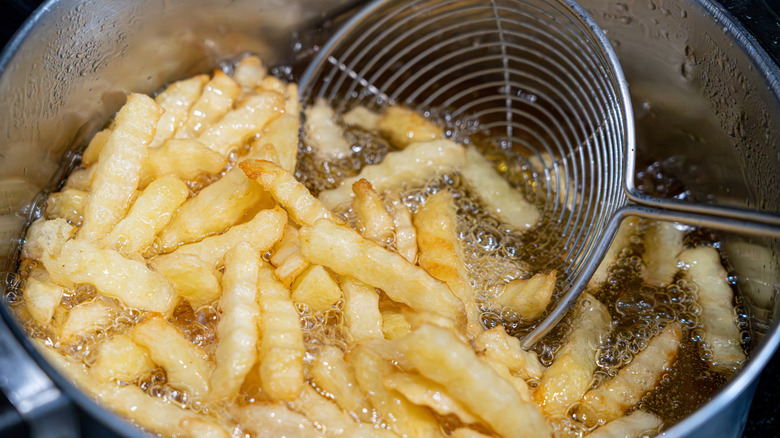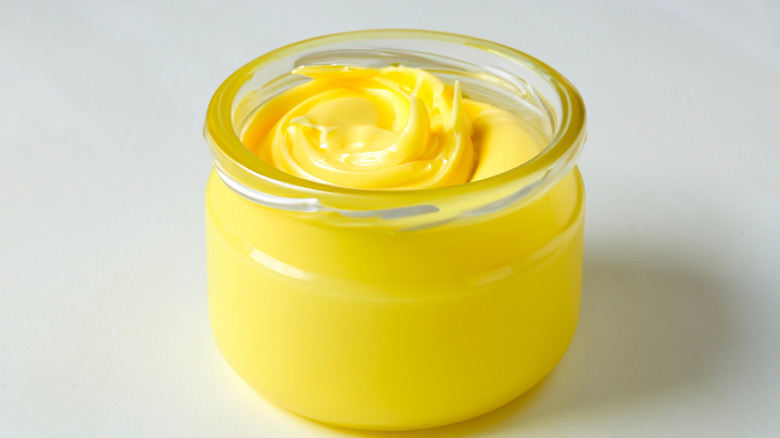The Science Behind Why Beef Tallow Leads To The Perfect French Fries
We will "tallow" you no lies — beef tallow is one of the best fats for frying up a batch of french fries. While many cooks use peanut,vegetable, or canola oil, beef tallow might actually be the superior fat for frying, and there's science to back it up. Vegetable oil has a smoke point of about 400 degrees Fahrenheit, while beef tallow has a smoke point of 420 degrees Fahrenheit, making it less likely to smoke or infuse your food with less-than-appetizing flavors.
Beef tallow also adds a level of flavor that other oils simply can't match. Unlike neutral-flavored oils, beef tallow retains its umami-rich, beefy flavor. This flavor is then infused into the potatoes as they fry, giving them extra depth and savoriness. Beef tallow was even the secret to McDonald's original (and beloved fries). Tallow's goodness is not just a matter of flavor, either. Beef tallow contains nutrients such as vitamin E and beta carotene, which adds to its nutrient density and yellow coloring.
What is beef tallow, exactly?
Ok, so it makes for great fries. But, what exactly is beef tallow? At the most basic level, beef tallow is beef fat that has been rendered to remove excess moisture and make it shelf-stable. Beef tallow is similar to lard. However, lard is usually made from pork products, and beef tallow is only made from cow fat. In particular, tallow comes from the fat around the cow's organs. In its un-rendered state, this fat is called suet. Suet is similar to tallow, but it has a less consistent texture; tallow is much smoother.
Beef tallow also makes for a great pantry staple. Tallow is shelf-stable and can be safely stored for up to 18 months at a time in your freezer. You can also store your tallow in a pantry for up to 12 months without it spoiling. You can also use tallow in recipes for foods such as tortillas or even apple fritters. So, the next time you cook up a batch of fries or some savory donuts, reach for the tallow.

